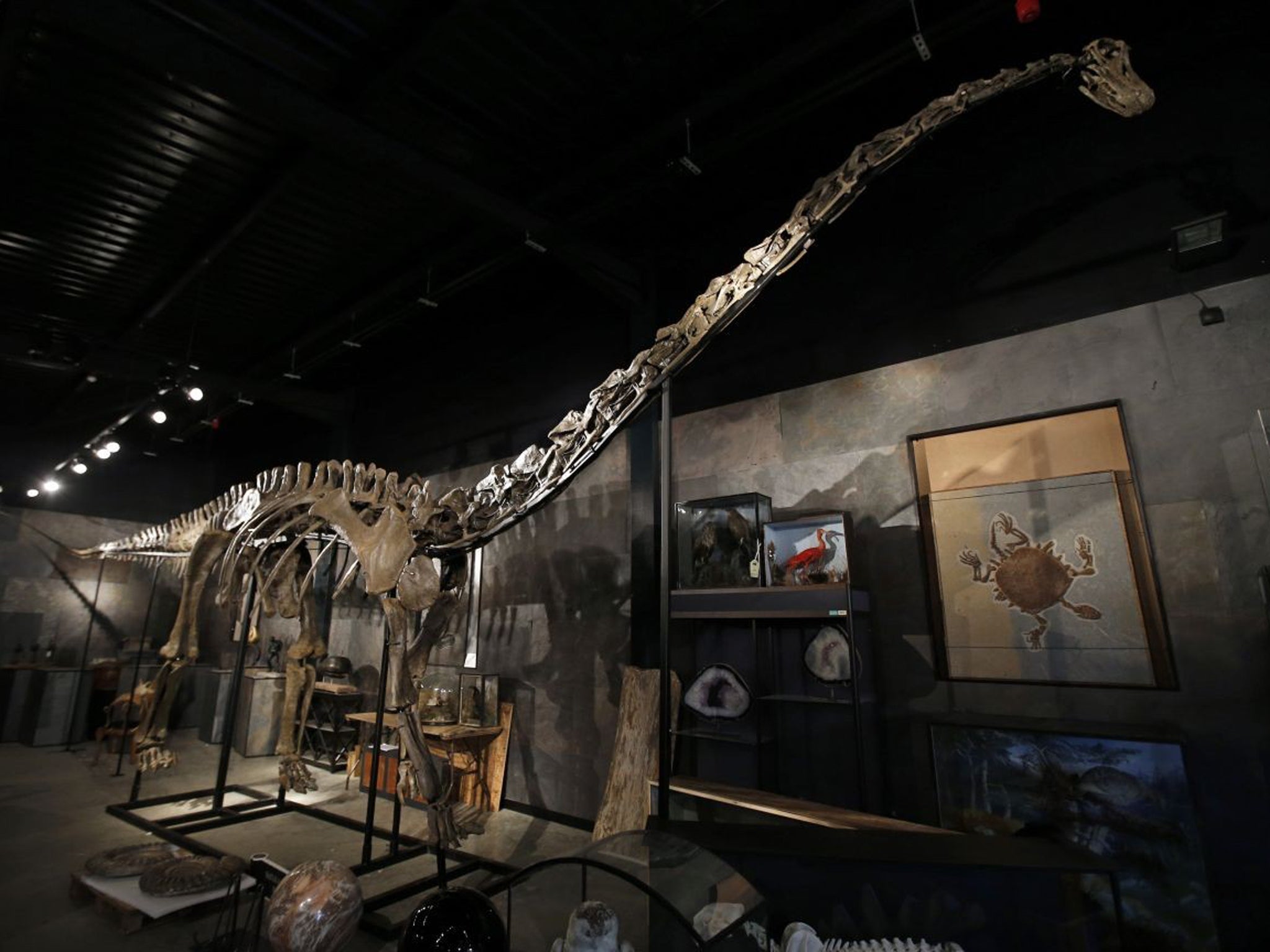Skeleton of dinosaur which last roamed Earth more than 150m years ago set for auction
55ft-long (17 metre) specimen of long-necked Diplodocus longus is believed to be first sale at UK auction of a large dinosaur skeleton

A giant skeleton of a dinosaur which last roamed Earth more than 150 million years ago is set to fetch up to £600,000 at a British auction next month.
The 55ft-long (17 metre) specimen of the long-necked Diplodocus longus is believed to be the first sale at a UK auction of a large dinosaur skeleton, according to experts.
The 19ft-tall (6 metre) female skeleton, nicknamed "Misty", was found almost completely intact in 2009 by the sons of palaeontologist Raimund Albersdoerfer near a quarry in Wyoming in the United States.
Albersdoerfer had been taking part in an excavation at a privately-owned quarry when he sent his sons to dig in an area nearby "to get them off his back".
To their father's astonishment, Benjamin and Jacob returned to him at the end of the day to say they had found an enormous bone.
Nine weeks later, Albersdoerfer's team dug out "Misty", and she has been painstakingly prepared at a leading fossil laboratory in Holland before being assembled in the UK.
The skeleton is now set to sell for an estimated price of £400,000 to £600,000 at Summers Place Auctions in Billingshurst, West Sussex, on November 27.
It is being auctioned as part of Summers Place's Evolution Sale, which is being curated by natural history expert and author Errol Fuller.
Mr Fuller, who has written a series of books on extinct creatures, said: "There are probably about six of these in the great museums of the world, including in Pittsburg and Washington.
"You are talking about a very rare item indeed. Even if you were lucky enough to find one in the first place, the digging out and the preparation then involved is an enormous undertaking.
"The rock that it was embedded in would have been extremely hard to break away from the bones, and you couldn't go at it with a sledge-hammer because the bones were vulnerable to breaking."
Mr Fuller said the skeleton could appeal to one of the emerging museums in the Far East or Middle East, or as a private showpiece to someone of great wealth.
PA
Subscribe to Independent Premium to bookmark this article
Want to bookmark your favourite articles and stories to read or reference later? Start your Independent Premium subscription today.

Join our commenting forum
Join thought-provoking conversations, follow other Independent readers and see their replies